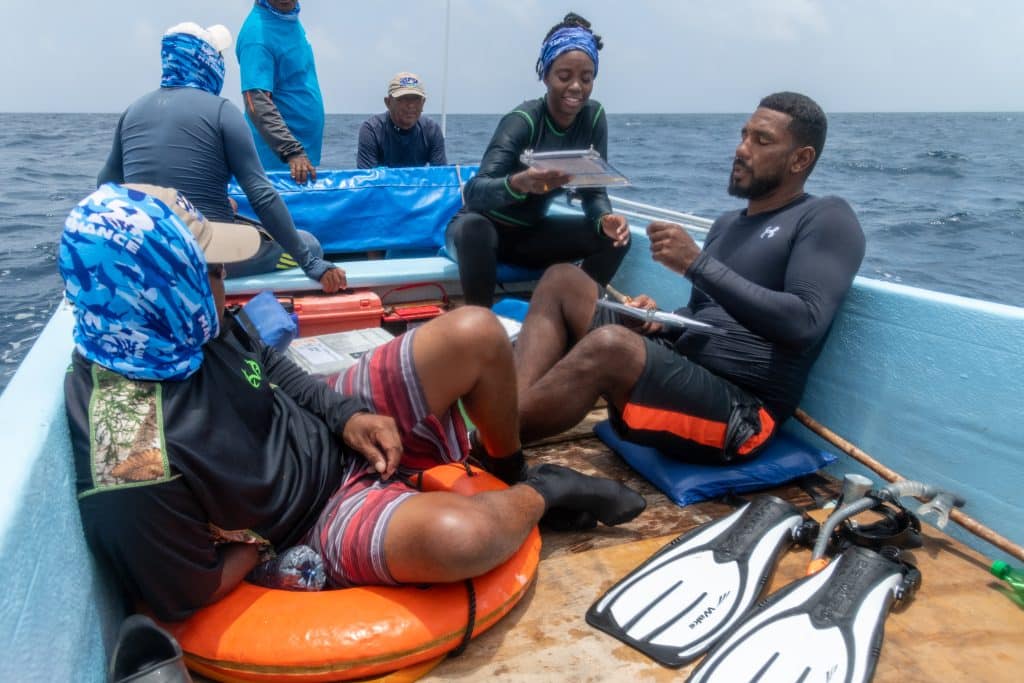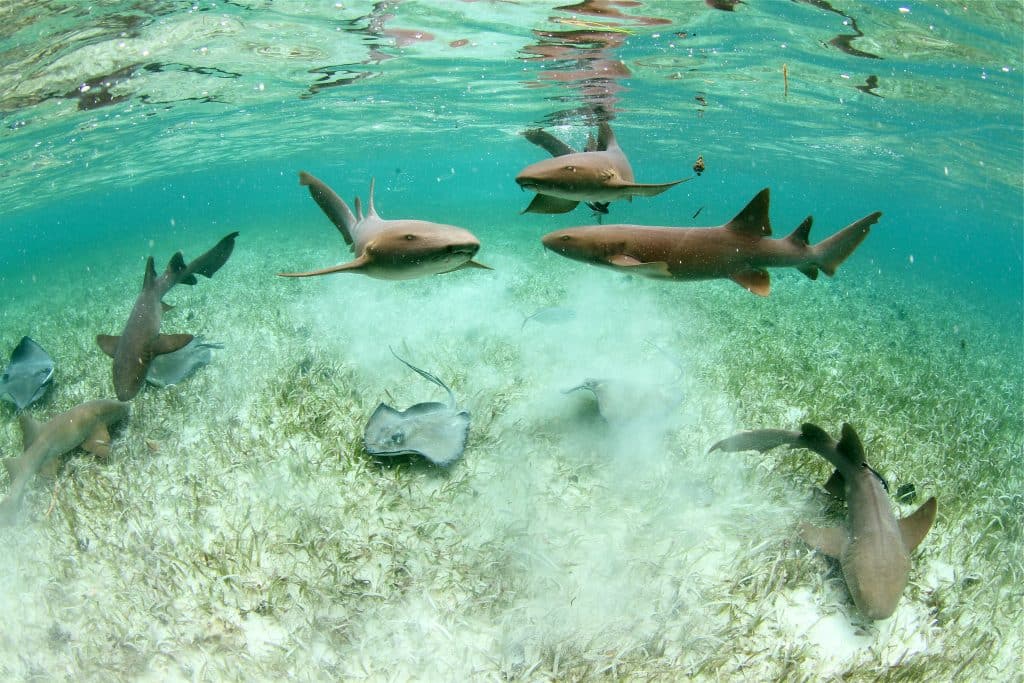As the sun began crawling over the horizon, Clara Sabal and an eager group of local fishers left the shoreline, each headed to a different site around Turneffe Atoll. Located 20 miles off the coast of Belize, this area was declared a marine reserve a decade ago. Since 2014, with help from these fishers, MarAlliance has been carefully monitoring how many sharks are returning to these protected waters. Stepping off the dock into her vessel, Clara sped toward the dawn and the atoll, the sputtering engine drowning out the waves.
Unsustainable fishing practices once devastated shark populations at Turneffe Atoll. MarAlliance spent years advocating for countrywide regulations against unchecked and illegal fishing, including an eventual ban on destructive gillnet fishing. The passing of these policies transformed Turneffe back into safe habitat, and the government gave management of the reserve to the Turneffe Atoll Sustainability Association (TASA). To determine if the sharks were coming back, TASA turned to MarAlliance; without MarAlliance’s shark survey statistics, they had no way of measuring the effectiveness of their management plan. Clara led these efforts as MarAlliance’s Research Officer, coordinating annual surveys with fisher volunteers to collect data about shark abundance, distribution, and diversity.
This year, Clara’s team confirmed the reserve’s management has been working well over time—around Turneffe Atoll and nearby Lighthouse Reef Atoll, MarAlliance recorded more sharks than anywhere else they’ve monitored in the last decade. Caribbean reef sharks and nurse sharks were the most numerous, but rare species like lemon sharks and great hammerheads were also seen. MarAlliance and their partners hope to replicate Turneffe Atoll’s successful conservation strategies elsewhere in Belize to help more shark populations recover.



